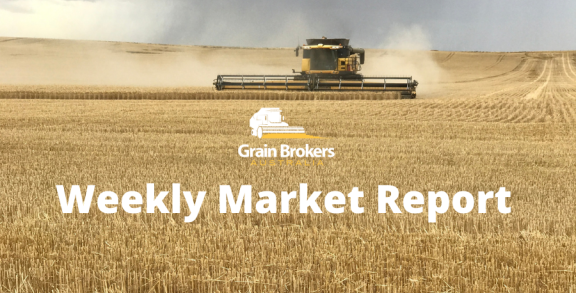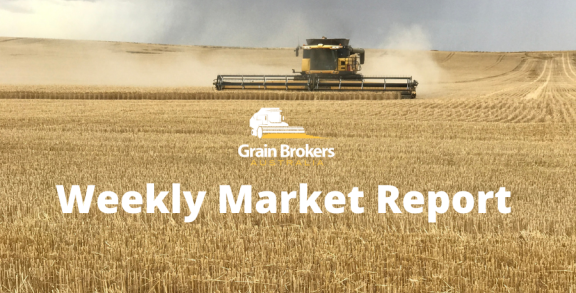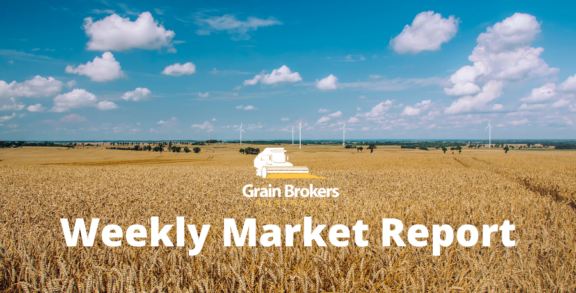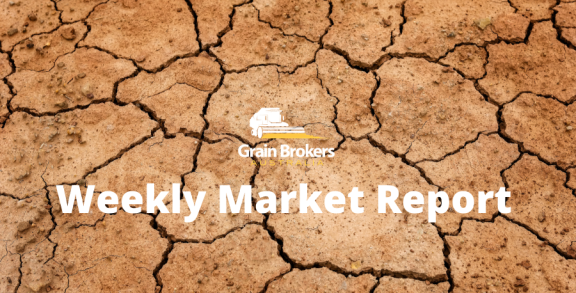
After a relatively dry February, most of Europe’s grain-growing regions saw soil moisture deficits eliminated and water reservoirs replenished following extremely beneficial and timely rainfall throughout March and April. The only exceptions are Spain and northern Italy, with the former largely drought-declared and the latter extremely dry.
According to the April report from the European Union’s Joint Research Centre unit, Monitoring Agricultural ResourceS (JRC MARS), the EU crop escaped relatively unscathed from a series of cold spells across much of the continent in early March and early April, with crops in most regions now enjoying ideal growing conditions with adequate soil moisture and slightly warmer than average spring temperatures.
JRC MARS decreased EU-27 soft wheat production in 2023/24 from 131.7 million metric tonne in its March update to 131.17MMT in April, up 3.3 per cent on 2022/23 output. This was on the back of a slight reduction in yield from 5.99 metric tonne per hectare in March to 5.96MT/ha last month, but it still sits three per cent above the five-year average. The planted area was unchanged compared to March at 21.99 million hectares but is up a smidgen year-on-year from 21.90 million hectares. Durum wheat production saw a minor month-on-month increase in the projected yield from 3.53MT/ha to 3.54MT/ha, putting total EU-27 production 6.4 per cent higher year-on-year at 7.6MMT.
Total barley production across the EU-27 was cut from 54.15MMT to 52.64MMT off a projected planted area of 10.7 million hectares, following a significant downward revision to spring barley yields in Spain, the EU’s biggest spring barley-producing nation. The average barley yield dropped from 5.06MT/ha in March to 4.92MT/ha in the latest report, but the spring barley yield estimate was slashed by 6.9 per cent from 4.34MT/ha to 4.04MT/ha, 4 per cent below the five-year average. On the other hand, winter barley yields received a slight upward adjustment to 5.93MT/ha.
Rapeseed is the dominant winter oilseed crop across the EU, expected to make up almost 60 per cent of total oilseed production in 2023/24. Output is currently forecast at 20MMT, 2.4 per cent higher than 2022/23, off a planted area of 6.05 million hectares, 3.1 per cent higher than the previous season. The Sunflower seed crop is forecast at 10.47MMT, 14.2 per cent higher year-on-year and 31.4 per cent of total EU oilseed production in 2023/24.
French farmers have been experiencing above-average rainfall and warmer-than-usual temperatures through March and the first half of April, with drier-than-average conditions closing out the month. As a result, French soft wheat conditions crept lower in the week to May 1. FranceAgriMer estimated 93 per cent of the crop was rated good-to-excellent, down from 94 per cent a week earlier but well above the 89 per cent recorded in the same week last year. The durum wheat good-to-excellent rating also fell one per cent to 88 per cent, against 83 per cent a year earlier. Total wheat production is forecast at 35.96MMT this harvest, up 2.6 per cent from 35.02MMT last harvest.
The winter barley crop in France bucked the wheat trend coming in one per cent higher at 92 per cent good-to-excellent compared to 86 per cent on the same date in 2022. The spring barley crop conditions were unchanged at 96 per cent in the top rating bracket, against 88 per cent in early May last year. JRC MARS pencilled total barley production 2.2 per cent higher year-on-year at 11.64MMT. The new season rapeseed crop is sailing along very nicely, with production forecast to be up slightly compared to 2022/23 to 4.56MMT.
Regular rainfall events through March and April have consolidated winter crop production in Germany, but the exceedingly wet fields did delay the spring and summer crop planting program. Rainfall registrations in March were the highest since 2001, and a cold snap at the beginning of April did test the winter crop’s frost resilience. The upcoming harvest is forecast to produce 22.33MMT of wheat, down from 22.59MMT in 2022/23. Forecast barley output is almost unchanged at 11.18MMT, and the rapeseed crop is up 5.4 per cent to 4.53MMT.
The winter crop conditions across most of Poland have been particularly favourable this year, but the spring planting campaign has been dogged by wet and cold weather. Several cold spells saw morning temperatures drop below zero in March and April, but the winter-hardened crops have reportedly escaped any significant damage. JRC MARS inked 2023/24 season wheat, barley and rapeseed production at 13.47MMT, 3.5MMT and 3.37MMT, respectively, off planted areas of 2.6 million hectares, 840,000 hectares and 1.05 million hectares.
The production prognosis is not so rosy for Spain, where winter and spring crops across all regions are suffering under the burden of severe moisture stress. Very little rain has fallen across the Iberian Peninsula since the beginning of January, and maximum temperatures have been among the highest ever recorded in some districts.
Soil moisture reserves are now critically low, and the winter and spring crop production outlook is falling by the day. The drought has reportedly engulfed more than 60 per cent of the country and caused permanent losses to over 3.5 million hectares of dryland winter crops. JRC MARS is calling Spain’s soft wheat production from this year’s harvest 4.95MMT, down from 5.39MMT last year and 7.46MMT in 2021. The barley picture is very similar, with 2023/24 production forecast at 6.04MMT, down from 6.62MMT in 2022/23 and 8.86MT the season prior.
Spain’s summer crop campaign is also hurting, with irrigation water reserves running critically low. This is expected to lead to a reduction in the planted area due to a shift from rice and maize to more drought-tolerant crops, according to JRC MARS. It is highly likely that some dryland areas will not be sown at all as there is insufficient moisture, and the ideal planting window is now closed.
In northern Italy, winter crops are struggling due to a lack of moisture, but the country’s production outlook is largely unchanged at this stage. However, rainfall is required in the next few weeks to prevent yields from dropping below trend and negatively impacting this season’s EU-27 production. The summer crop planting campaign has commenced, but like Spain, water reservoirs are lower than average entering summer, and irrigation water restrictions have already been implemented in the northwest of the country.
With smaller winter crop production expected in major producers such as Russia, Ukraine, Australia and possibly the United States in 2023/24, a boost to EU output is a welcome positive for global new crop balance sheets. However, with significant production issues surfacing in Spain, drought conditions intensifying throughout the Maghreb region of northern Africa, and continued supply uncertainty out of the Black Sea region, competition will be fierce around the Mediterranean for new crop supplies over the next twelve months.
Call your local Grain Brokers Australia representative on 1300 946 544 to discuss your grain marketing needs.





